The i-searchresults.com redirect is a malware browser hijacker that redirects the victims to a hacker-controlled page. Additional viruses can be instituted, as well as any extra components.

Threat Summary
| Name | i-searchresults.com |
| Type | Browser Hijacker, PUP, Cryptocurrecy Miner |
| Short Description | The i-searchresults.com redirect is a browser hijacker that redirects the users to a malware site. |
| Symptoms | Altered web browser settings. |
| Distribution Method | Spam messages, Fake Browser Extensions, Bundled Packages |
| Detection Tool |
See If Your System Has Been Affected by malware
Download
Malware Removal Tool
|
| User Experience | Join Our Forum to Discuss i-searchresults.com. |

i-searchresults.com Redirect – Spread Techniques
Computer security experts discovered a new browser hijacker called the i-searchresults.com redirect. It is distributed using a variety of different techniques depending on the intended victims and the scope of the attacks. One of the most popular ways is to create malware sites that can lead to the browser infection. They are usually made to resemble legitimate web services such as download portals and search engines. In a similar way the malware samples associated with the i-searchresults.com redirect can be spread using fake browser plugins. They re uploaded to file sharing networks or the software repositories of the most widely used browsers: Mozilla Firefox, Google Chrome, Safari, Microsoft Edge, Opera and Internet Explorer.
Email messages can be utilized to spread the malware code using different tactics. Some of them include the following:
- Hyperlinks — The malware messages can include links to sites that infect the victims with the virus upon interaction. They are usually disguised as password reset links, login pages or confirmation dialogs.
- File Attachments — The i-searchresults.com redirect can be embedded directly into the messages. Depending on the exact distribution scheme the file can be placed in an archive or placed directly as the executable file.
- Infected Documents — The criminals can embed malware code in documents of various types: rich text documents, presentations, spreadsheets. Once they are opened by the vctims a notification prompt appears which asks the victims to enable the built-in macros (scripts). If this is done then the infection begins. The commands retrieve the malware engine from a remote server and execute the files on the local machine.
In certain cases the i-searchresults.com redirect can be linked in various types of web scripts. They can take advantage of banners, ads, pop-ups and other web site content.

i-searchresults.com Redirect – Technical Description
The i-searchresults.com redirect follows the behavior tactics associated with similar viruses. The standard browser hijacker is usually made compatible with the most popular web applications: Mozilla Firefox, Google Chrome, Safari, Microsoft Edge, Opera and Internet Explorer.
The basic changes that are made are related to the basic settings. The malware code automatically changes the default home page, new tabs page and search engine to point to the malware-controlled domain. This is the standard redirect code which makes sure that every time the victims open up their browsers the hacker page will be displayed. Tracking cookies are imposed on the users that seek to extract a large amount of data from the machines. The security experts categorize it in two main categories — personally-identifiable data and anonymous metrics. The first type mainly searches for strings associated with the users name, telephone number, address, passwords and preferences. The hijacked information can directly expose the users identity and can be used to blackmail then in the later stages of the malware execution.
Follow-up behavior can include system changes that can impact the operating system on a deep level. The hackers can opt to change the Windows registry which can alter the normal execution of the operating system services. In other cases this can affect user-installed applications as well. As the infections originate from the web browsers the hackers can gain access to the stored data in them: cookies, form data, preferences, bookmarks, history, passwords and account credentials.
The i-searchresults.com redirect can be used to institute a Trojan component. It allows the criminal operators to spy on the victims in real time, as well as take over control of the victims computer at any given time. Such modules also allow them to execute arbitrary commands that can install additional malware. A common method used by the malware engine is to make the infection engine connect to a hacker-controlled server. It can be used to load other components as well as provide a direct control link to the operators.
It is possible for the browser hijacker to cause an infection carrying a cryptocurrency miner. This would load a miner program that takes advantage of the available system resources to generate income for the hacker operators.
Such attacks allow the hackers to install the malware as a persistent threat. In such cases the redirect monitors the users activity to prevent them from attempting to remove it using manual removal methods.
The victims are shown a standard search engine that has been made using a template engine to resemble legitimate web services. A logo image is displayed alongside the search engine box. There is nothing else on the page except the bottom menu bar which stores the links to the privacy policy and terms of use documents.

i-searchresults.com Redirect – Privacy Policy
The privacy policy and terms of use do not list the company behind the site. This means that practically any hacker or criminal group can be the operators behind the threat. Usually such sites are part of large networks that pool the data into databases which are then sold for profit to marketing agencies for example. As the gathered information contains a lot of personal and sensitive data it can also be used for blackmailing purposes.
The document lists that the following types of data is acquired automatically and without user consent:
- User IP Address
- Search Keywords
- Complex User Behavior Patterns
- Used Web Browser

Remove i-searchresults.com Redirect
To remove i-searchresults.com manually from your computer, follow the step-by-step removal instructions given below. In case the manual removal does not get rid of the browser hijacker entirely, you should search for and remove any leftover items with an advanced anti-malware tool. Such software helps keep your computer secure in the future.
- Windows
- Mac OS X
- Google Chrome
- Mozilla Firefox
- Microsoft Edge
- Safari
- Internet Explorer
- Stop Push Pop-ups
How to Remove i-searchresults.com from Windows.
Step 1: Scan for i-searchresults.com with SpyHunter Anti-Malware Tool



Step 2: Boot Your PC In Safe Mode





Step 3: Uninstall i-searchresults.com and related software from Windows
Uninstall Steps for Windows 11
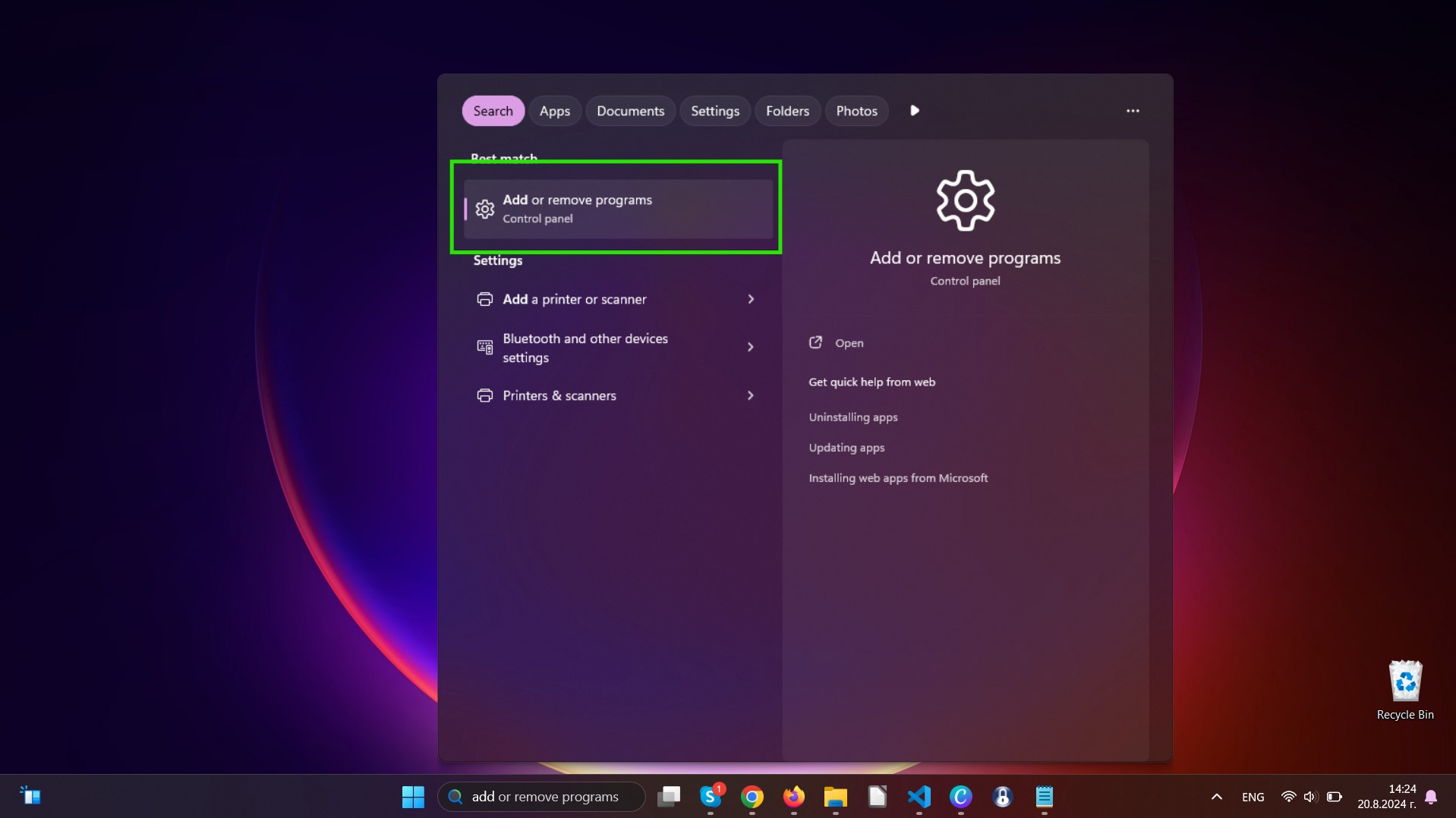
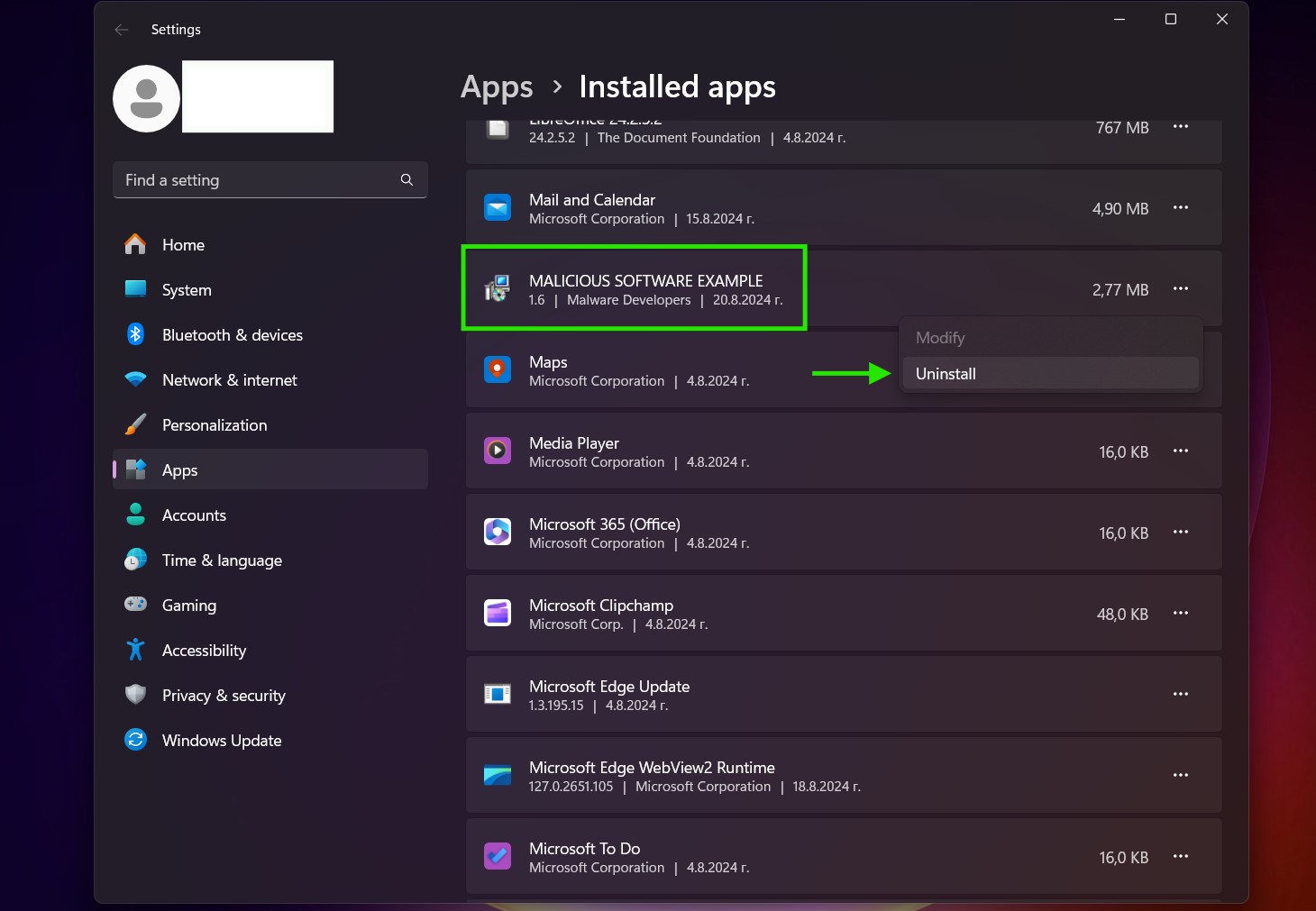
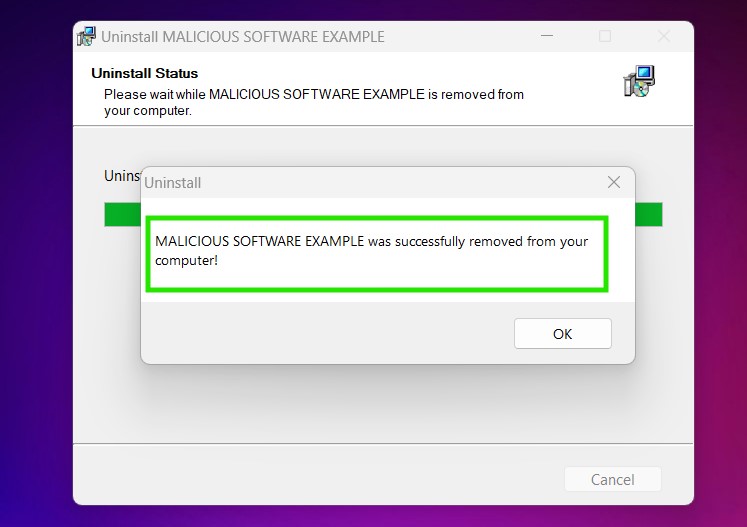
Uninstall Steps for Windows 10 and Older Versions
Here is a method in few easy steps that should be able to uninstall most programs. No matter if you are using Windows 10, 8, 7, Vista or XP, those steps will get the job done. Dragging the program or its folder to the recycle bin can be a very bad decision. If you do that, bits and pieces of the program are left behind, and that can lead to unstable work of your PC, errors with the file type associations and other unpleasant activities. The proper way to get a program off your computer is to Uninstall it. To do that:


 Follow the instructions above and you will successfully uninstall most programs.
Follow the instructions above and you will successfully uninstall most programs.
Step 4: Clean Any registries, Created by i-searchresults.com on Your PC.
The usually targeted registries of Windows machines are the following:
- HKEY_LOCAL_MACHINE\Software\Microsoft\Windows\CurrentVersion\Run
- HKEY_CURRENT_USER\Software\Microsoft\Windows\CurrentVersion\Run
- HKEY_LOCAL_MACHINE\Software\Microsoft\Windows\CurrentVersion\RunOnce
- HKEY_CURRENT_USER\Software\Microsoft\Windows\CurrentVersion\RunOnce
You can access them by opening the Windows registry editor and deleting any values, created by i-searchresults.com there. This can happen by following the steps underneath:


 Tip: To find a virus-created value, you can right-click on it and click "Modify" to see which file it is set to run. If this is the virus file location, remove the value.
Tip: To find a virus-created value, you can right-click on it and click "Modify" to see which file it is set to run. If this is the virus file location, remove the value.
Video Removal Guide for i-searchresults.com (Windows).
Get rid of i-searchresults.com from Mac OS X.
Step 1: Uninstall i-searchresults.com and remove related files and objects
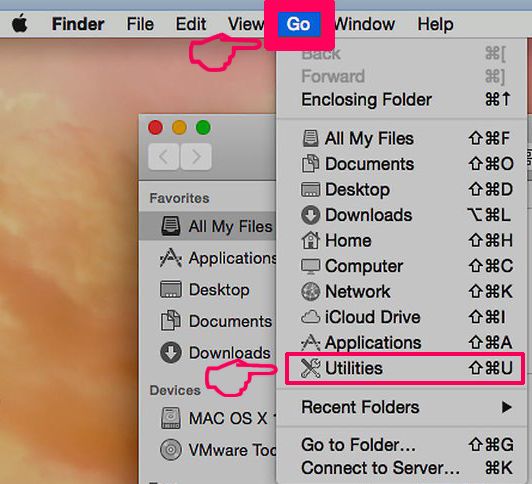
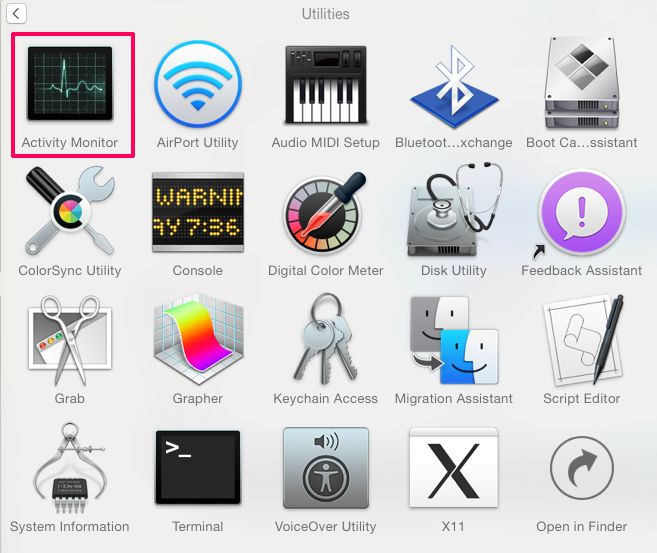
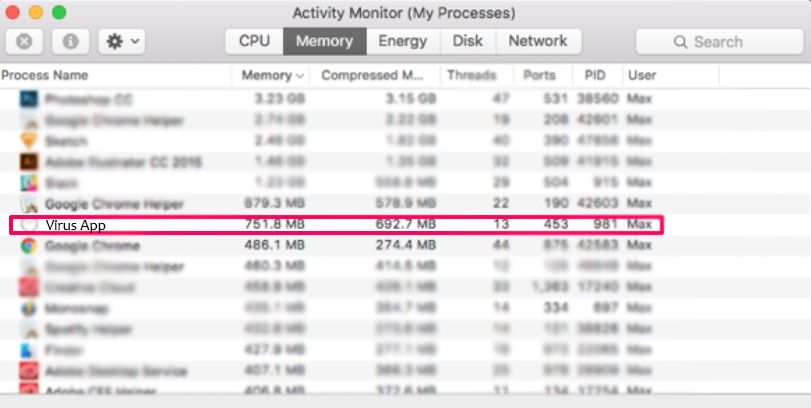
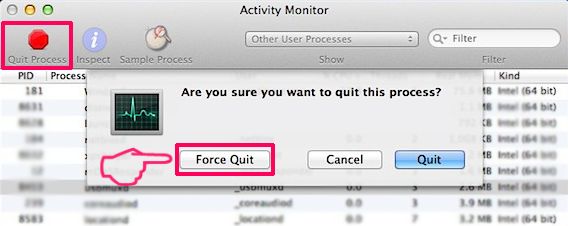
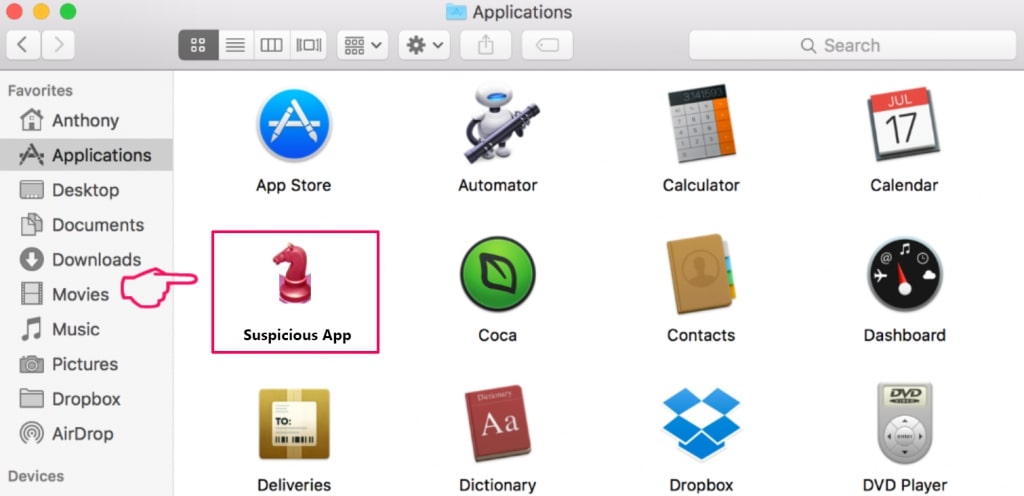
Your Mac will then show you a list of items that start automatically when you log in. Look for any suspicious apps identical or similar to i-searchresults.com. Check the app you want to stop from running automatically and then select on the Minus (“-“) icon to hide it.
- Go to Finder.
- In the search bar type the name of the app that you want to remove.
- Above the search bar change the two drop down menus to “System Files” and “Are Included” so that you can see all of the files associated with the application you want to remove. Bear in mind that some of the files may not be related to the app so be very careful which files you delete.
- If all of the files are related, hold the ⌘+A buttons to select them and then drive them to “Trash”.
In case you cannot remove i-searchresults.com via Step 1 above:
In case you cannot find the virus files and objects in your Applications or other places we have shown above, you can manually look for them in the Libraries of your Mac. But before doing this, please read the disclaimer below:
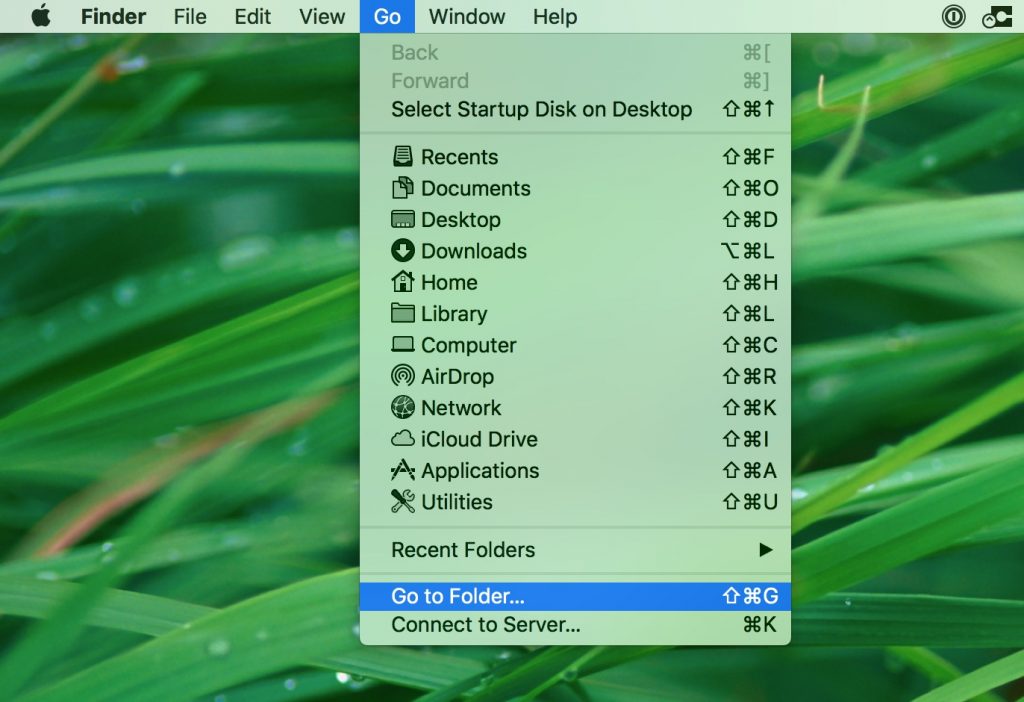
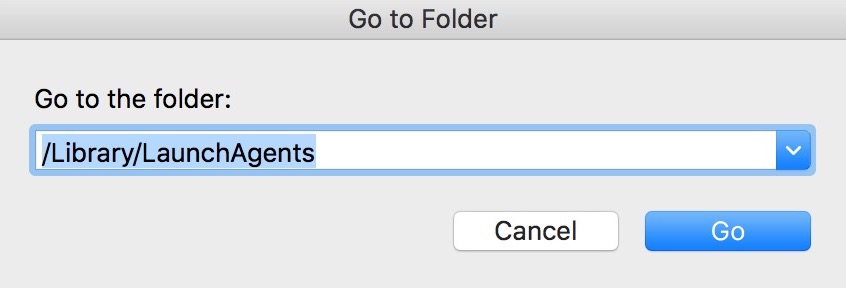
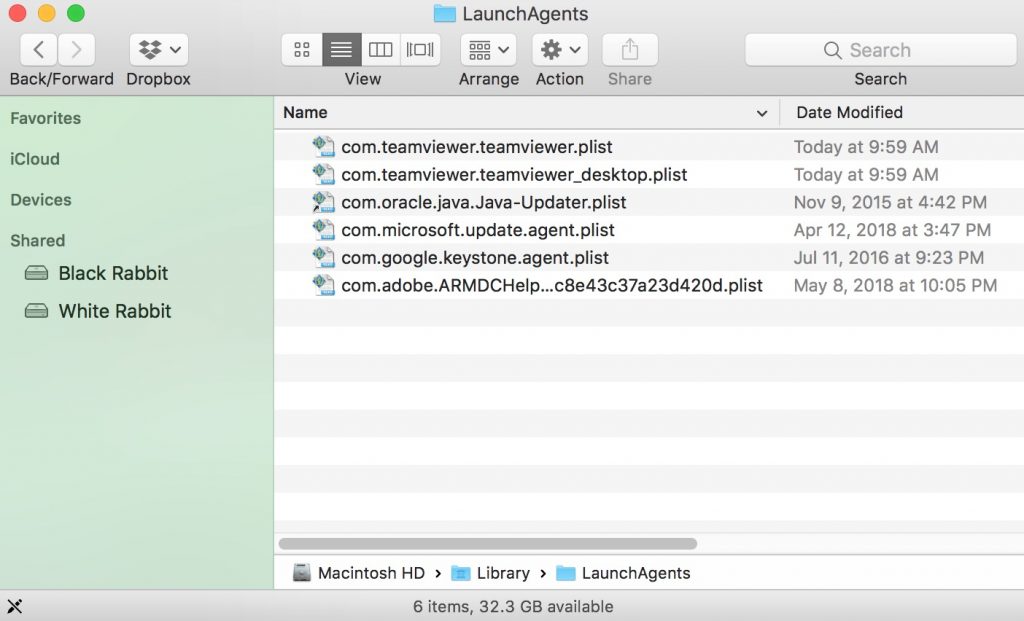
You can repeat the same procedure with the following other Library directories:
→ ~/Library/LaunchAgents
/Library/LaunchDaemons
Tip: ~ is there on purpose, because it leads to more LaunchAgents.
Step 2: Scan for and remove i-searchresults.com files from your Mac
When you are facing problems on your Mac as a result of unwanted scripts and programs such as i-searchresults.com, the recommended way of eliminating the threat is by using an anti-malware program. SpyHunter for Mac offers advanced security features along with other modules that will improve your Mac’s security and protect it in the future.
Video Removal Guide for i-searchresults.com (Mac)
Remove i-searchresults.com from Google Chrome.
Step 1: Start Google Chrome and open the drop menu

Step 2: Move the cursor over "Tools" and then from the extended menu choose "Extensions"
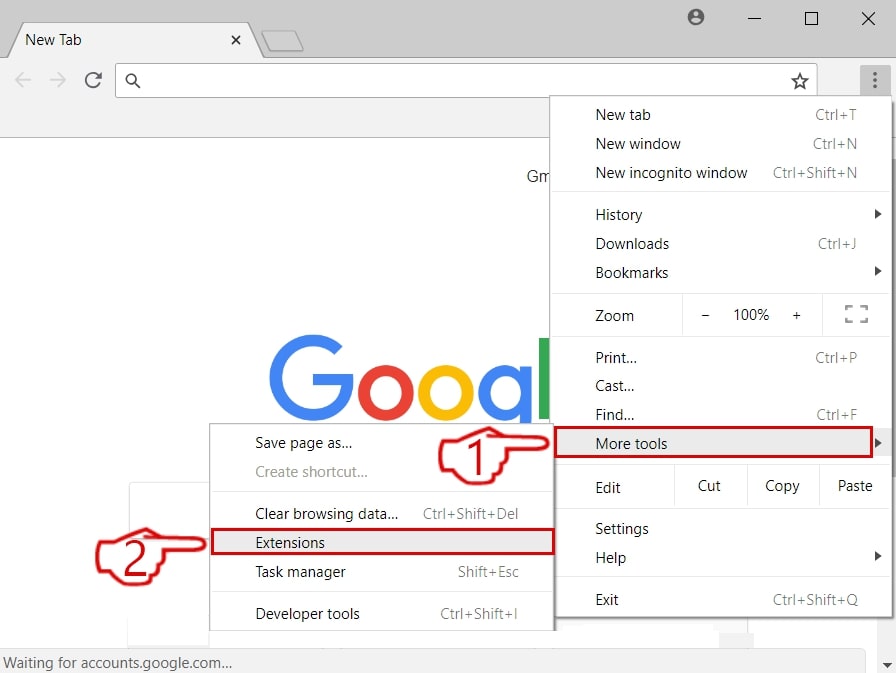
Step 3: From the opened "Extensions" menu locate the unwanted extension and click on its "Remove" button.
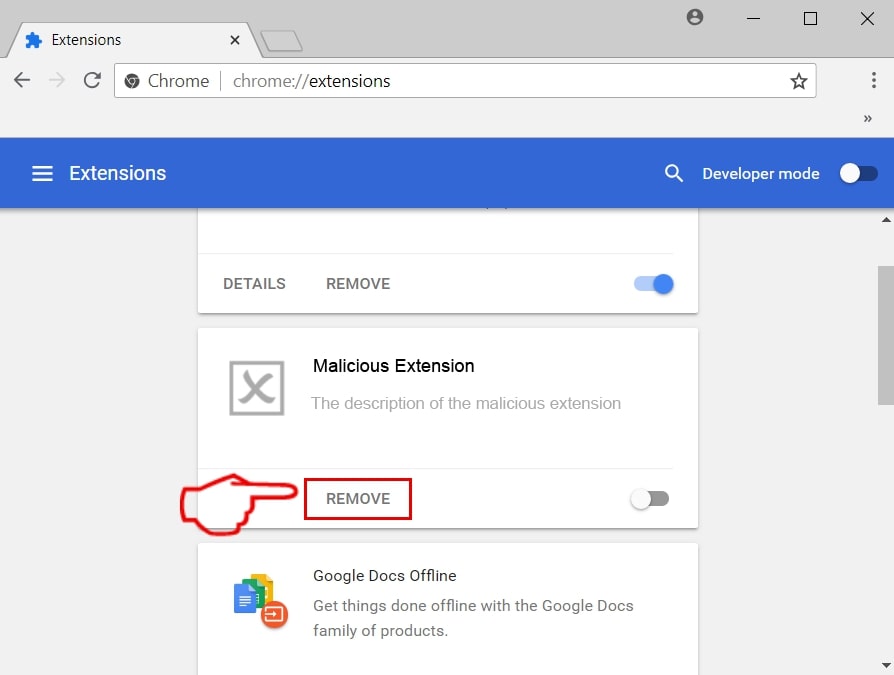
Step 4: After the extension is removed, restart Google Chrome by closing it from the red "X" button at the top right corner and start it again.
Erase i-searchresults.com from Mozilla Firefox.
Step 1: Start Mozilla Firefox. Open the menu window:
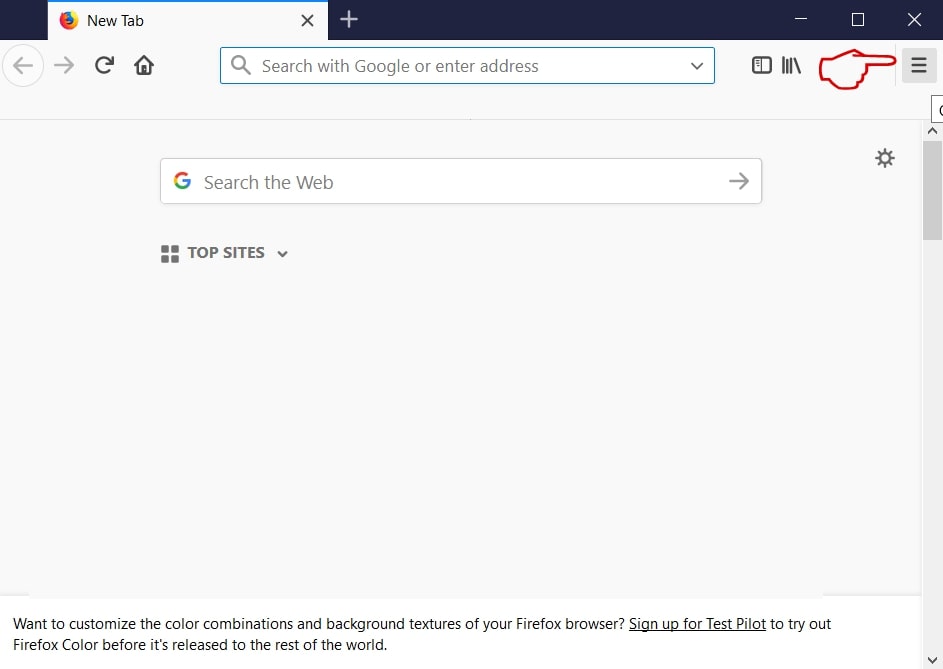
Step 2: Select the "Add-ons" icon from the menu.
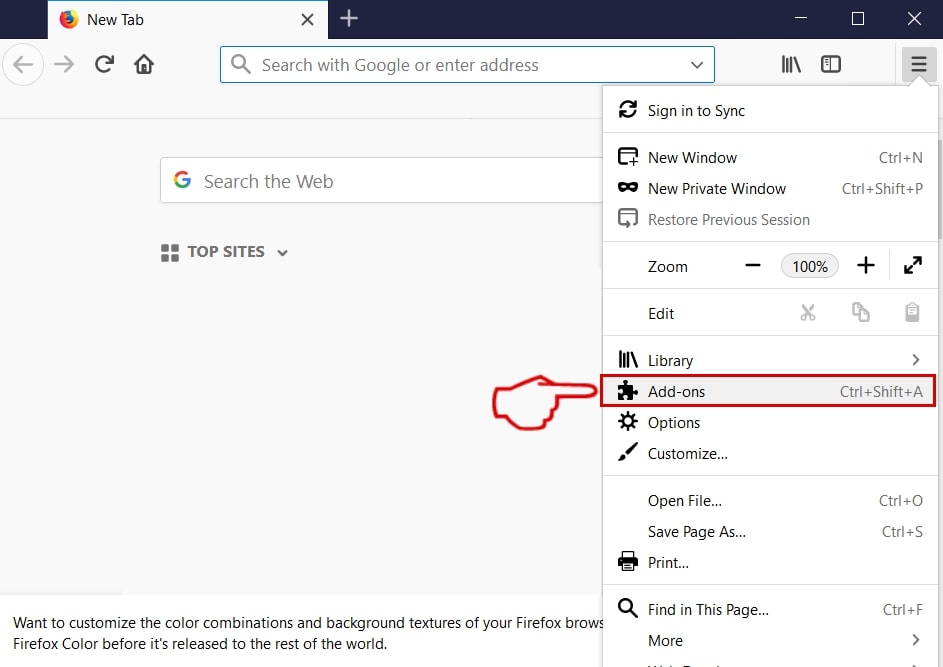
Step 3: Select the unwanted extension and click "Remove"

Step 4: After the extension is removed, restart Mozilla Firefox by closing it from the red "X" button at the top right corner and start it again.
Uninstall i-searchresults.com from Microsoft Edge.
Step 1: Start Edge browser.
Step 2: Open the drop menu by clicking on the icon at the top right corner.

Step 3: From the drop menu select "Extensions".
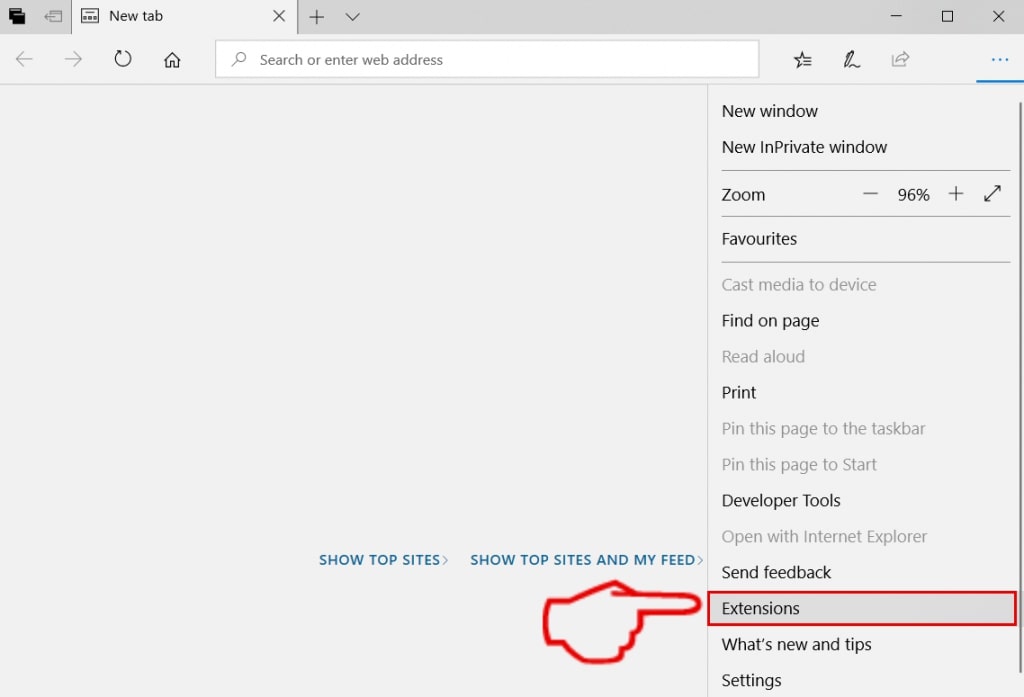
Step 4: Choose the suspected malicious extension you want to remove and then click on the gear icon.

Step 5: Remove the malicious extension by scrolling down and then clicking on Uninstall.

Remove i-searchresults.com from Safari
Step 1: Start the Safari app.
Step 2: After hovering your mouse cursor to the top of the screen, click on the Safari text to open its drop down menu.
Step 3: From the menu, click on "Preferences".
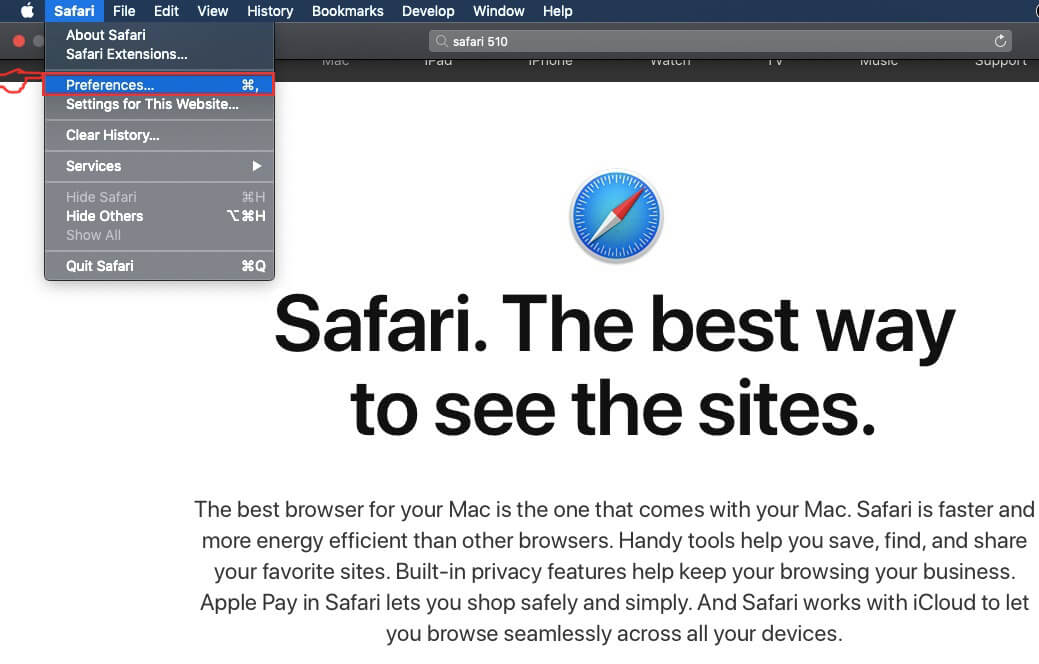
Step 4: After that, select the 'Extensions' Tab.

Step 5: Click once on the extension you want to remove.
Step 6: Click 'Uninstall'.
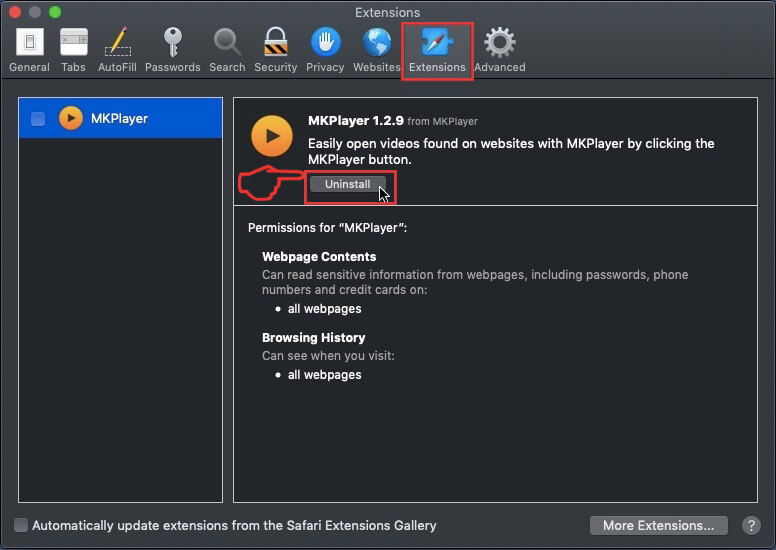
A pop-up window will appear asking for confirmation to uninstall the extension. Select 'Uninstall' again, and the i-searchresults.com will be removed.
Eliminate i-searchresults.com from Internet Explorer.
Step 1: Start Internet Explorer.
Step 2: Click on the gear icon labeled 'Tools' to open the drop menu and select 'Manage Add-ons'
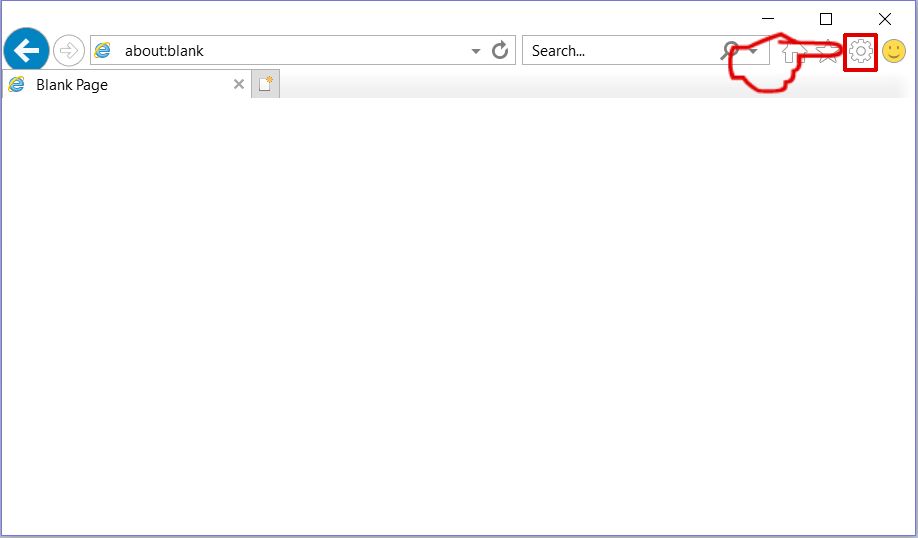
Step 3: In the 'Manage Add-ons' window.
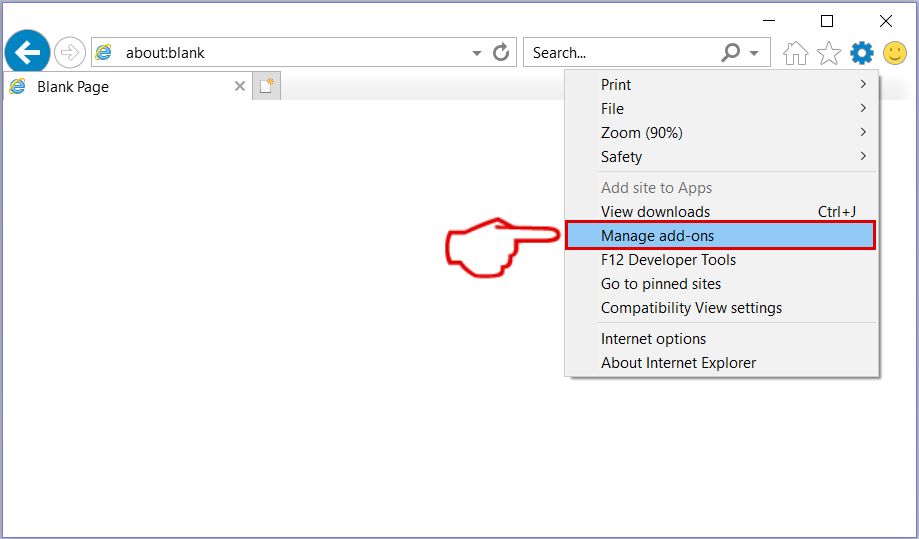
Step 4: Select the extension you want to remove and then click 'Disable'. A pop-up window will appear to inform you that you are about to disable the selected extension, and some more add-ons might be disabled as well. Leave all the boxes checked, and click 'Disable'.
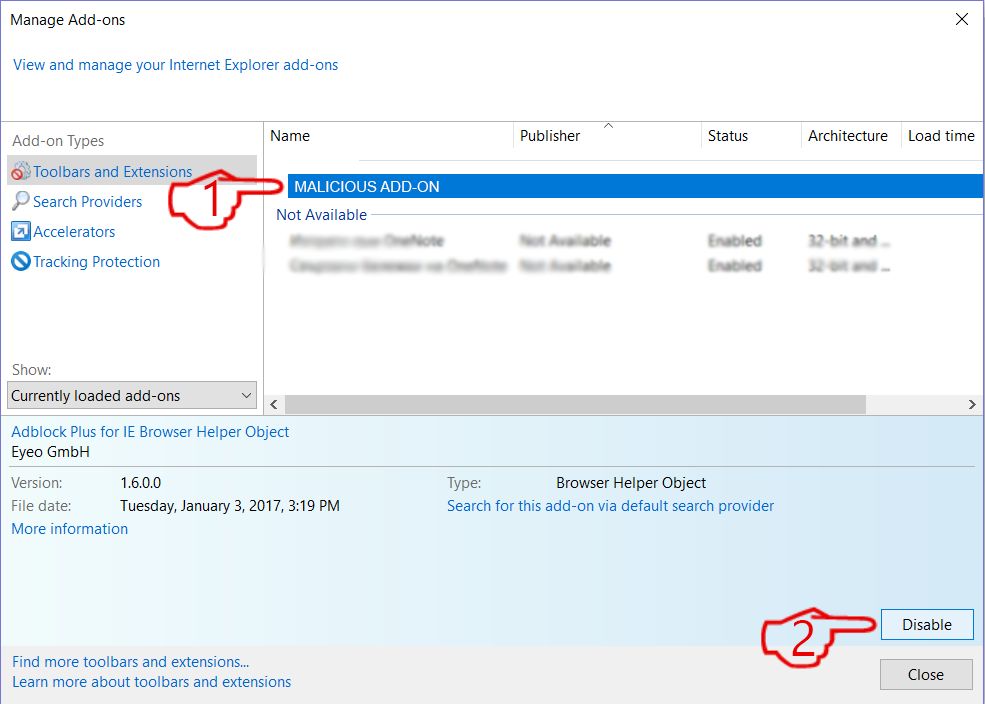
Step 5: After the unwanted extension has been removed, restart Internet Explorer by closing it from the red 'X' button located at the top right corner and start it again.
Remove Push Notifications from Your Browsers
Turn Off Push Notifications from Google Chrome
To disable any Push Notices from Google Chrome browser, please follow the steps below:
Step 1: Go to Settings in Chrome.
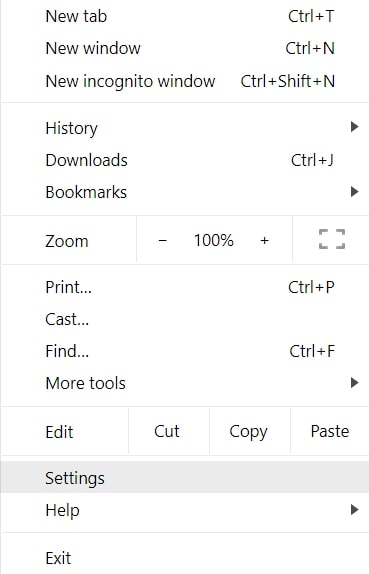
Step 2: In Settings, select “Advanced Settings”:
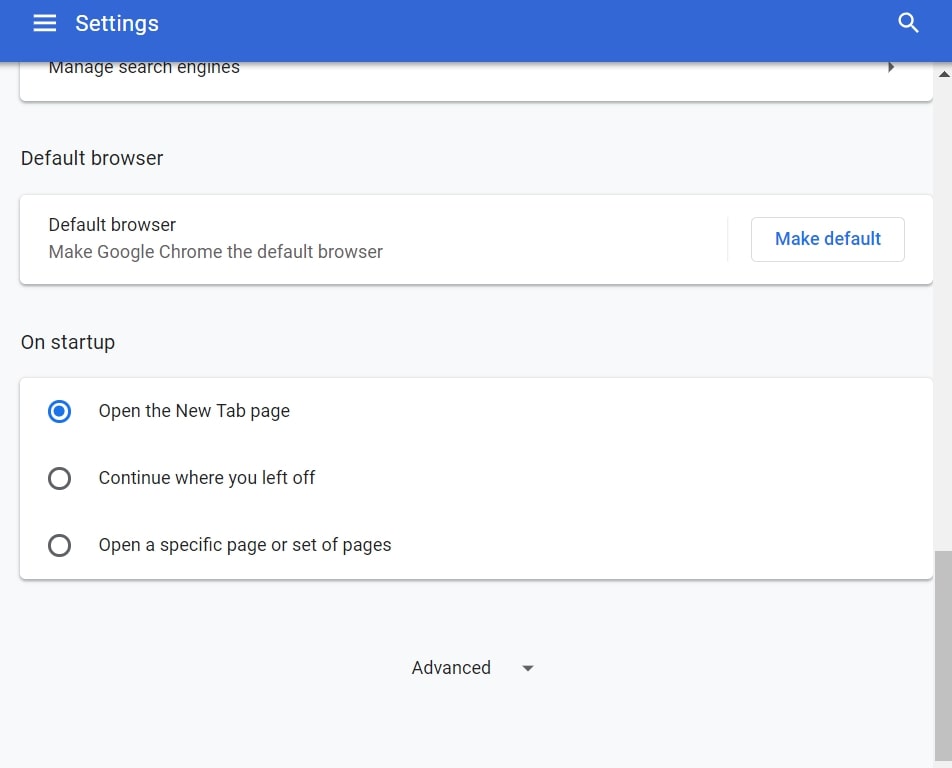
Step 3: Click “Content Settings”:
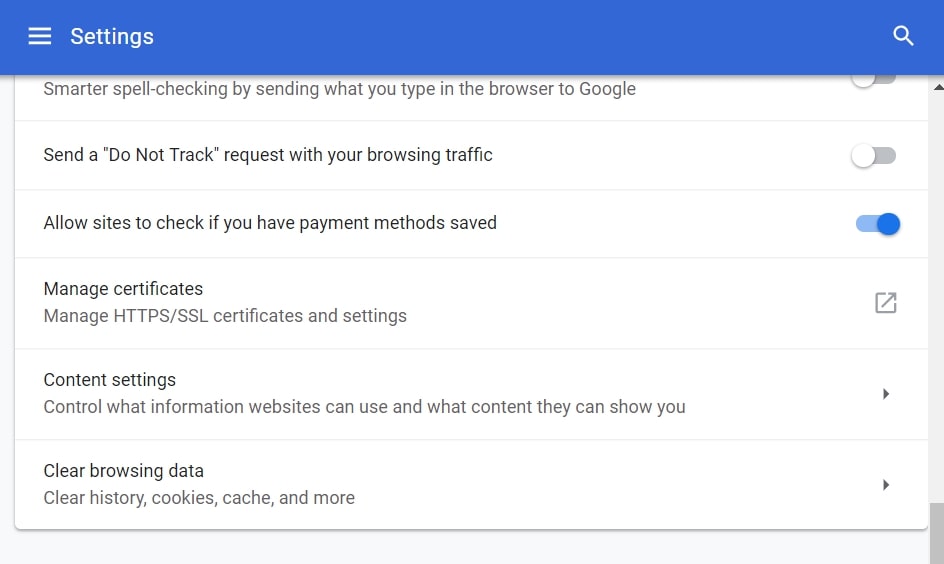
Step 4: Open “Notifications”:
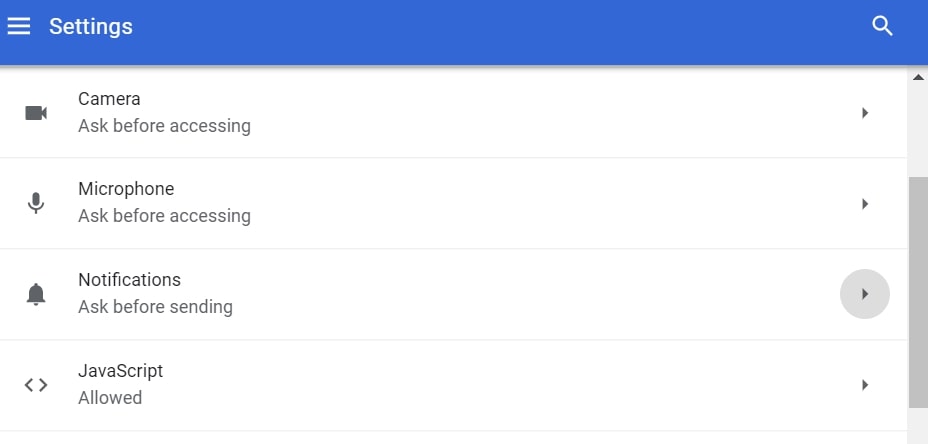
Step 5: Click the three dots and choose Block, Edit or Remove options:

Remove Push Notifications on Firefox
Step 1: Go to Firefox Options.
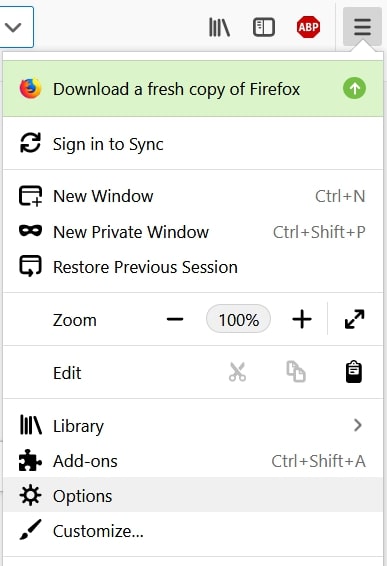
Step 2: Go to “Settings”, type “notifications” in the search bar and click "Settings":
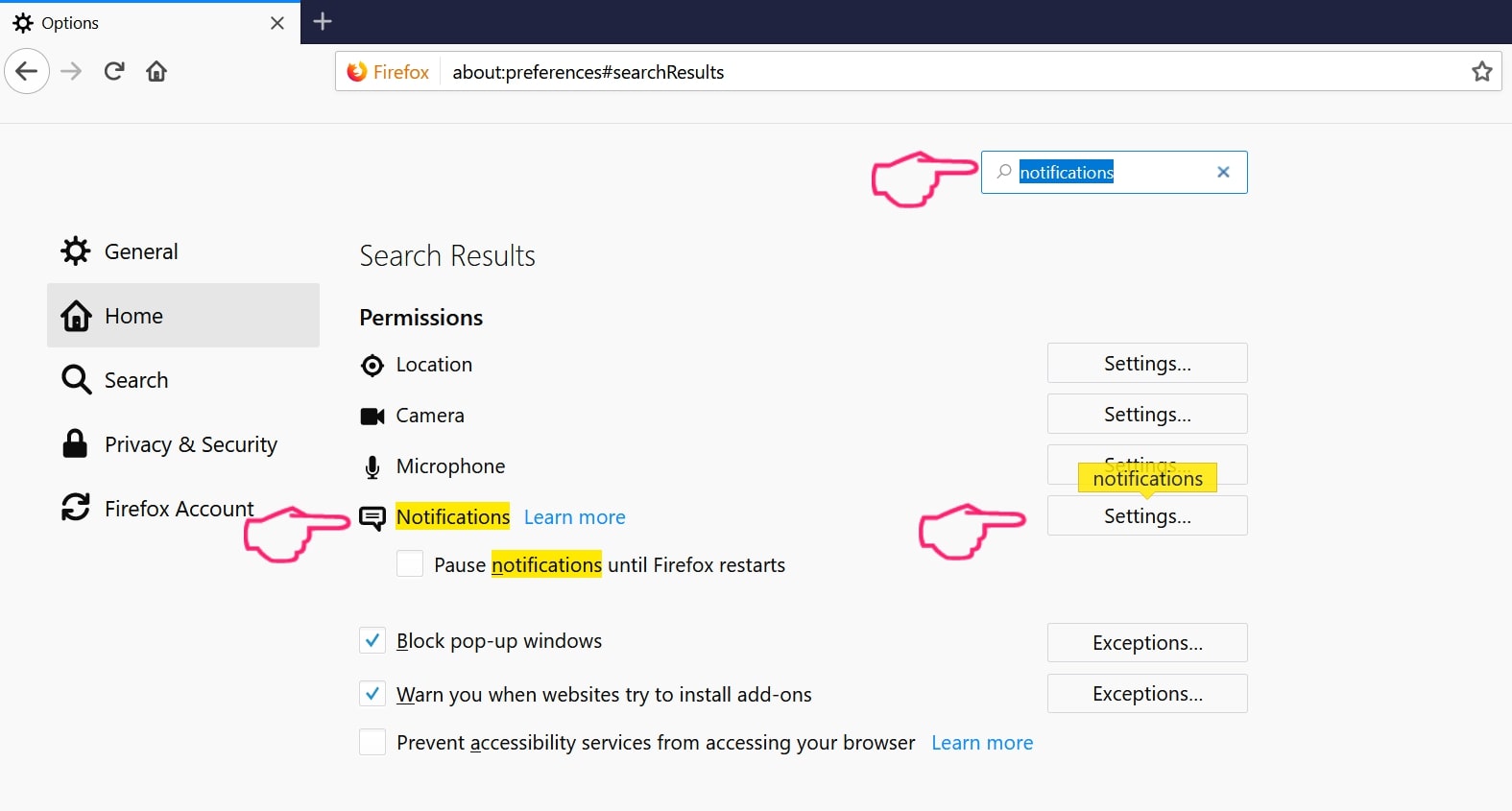
Step 3: Click “Remove” on any site you wish notifications gone and click “Save Changes”
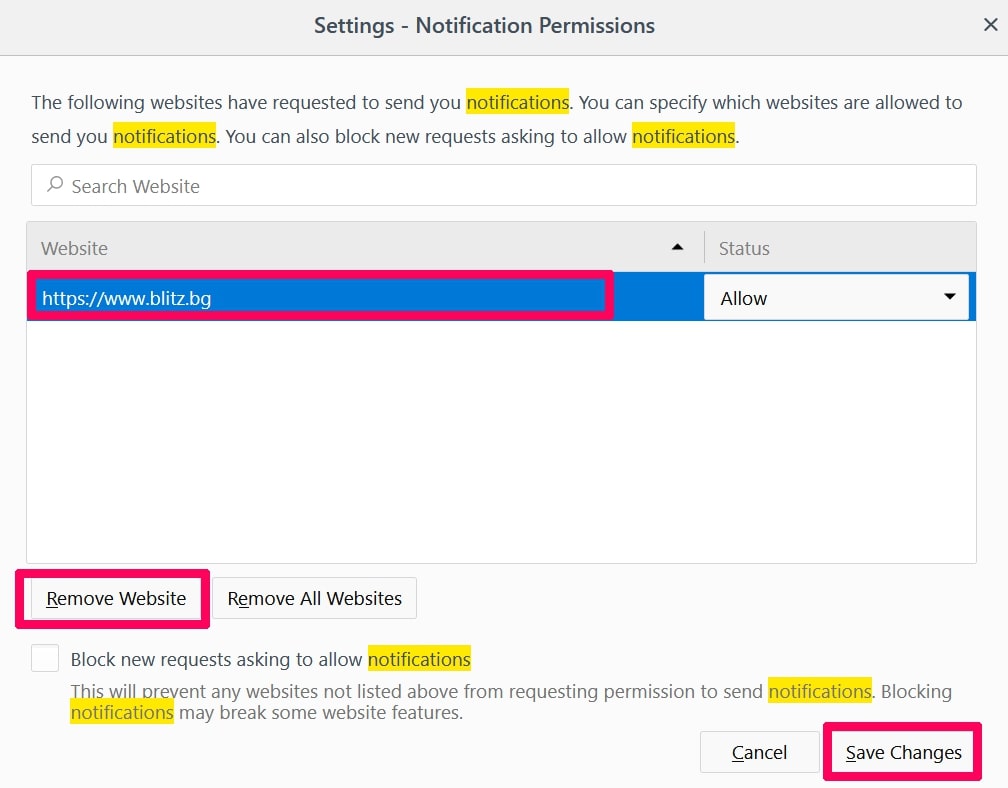
Stop Push Notifications on Opera
Step 1: In Opera, press ALT+P to go to Settings.

Step 2: In Setting search, type “Content” to go to Content Settings.
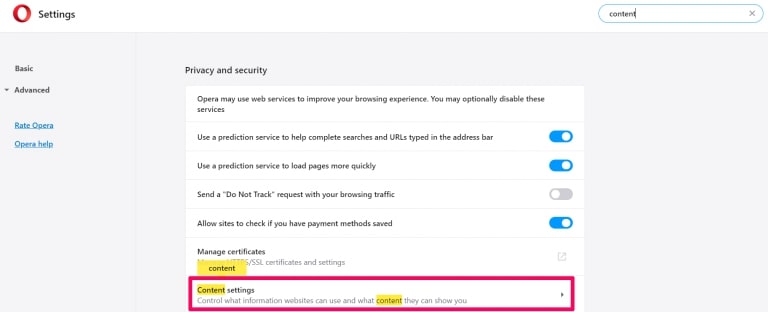
Step 3: Open Notifications:
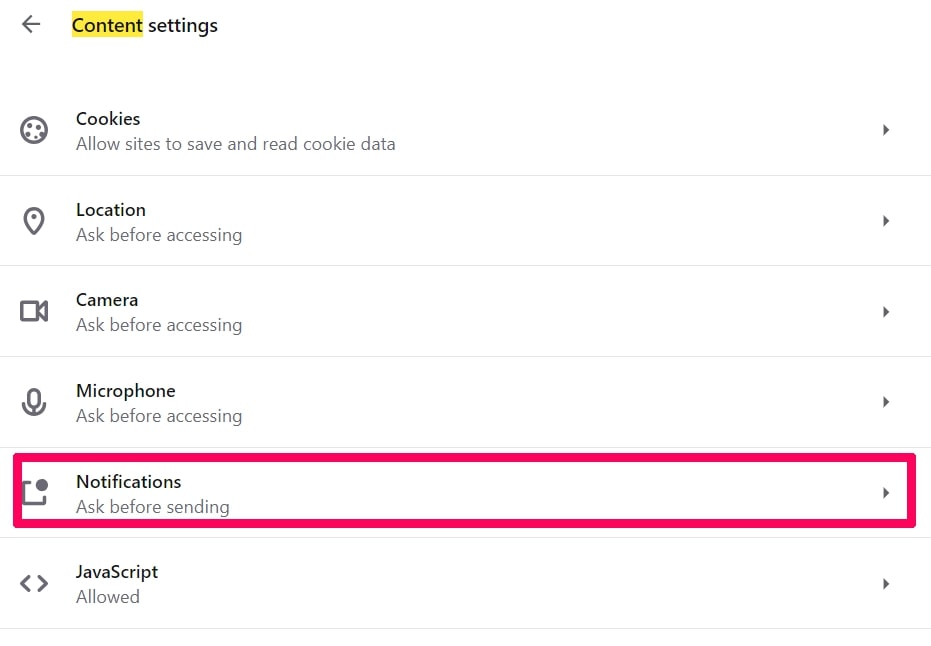
Step 4: Do the same as you did with Google Chrome (explained below):
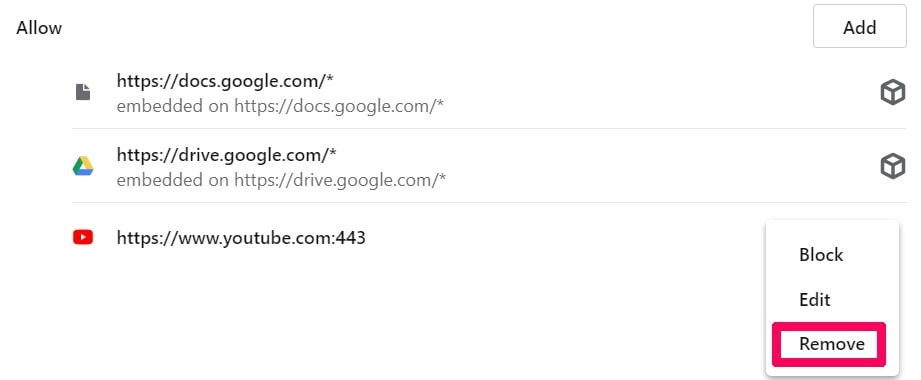
Eliminate Push Notifications on Safari
Step 1: Open Safari Preferences.
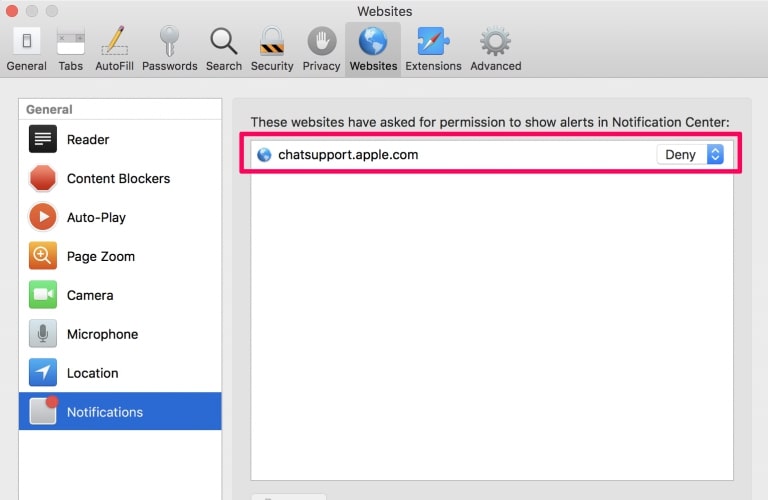
Step 2: Choose the domain from where you like push pop-ups gone and change to "Deny" from "Allow".
i-searchresults.com-FAQ
What Is i-searchresults.com?
The i-searchresults.com threat is adware or browser redirect virus.
It may slow your computer down significantly and display advertisements. The main idea is for your information to likely get stolen or more ads to appear on your device.
The creators of such unwanted apps work with pay-per-click schemes to get your computer to visit risky or different types of websites that may generate them funds. This is why they do not even care what types of websites show up on the ads. This makes their unwanted software indirectly risky for your OS.
What Are the Symptoms of i-searchresults.com?
There are several symptoms to look for when this particular threat and also unwanted apps in general are active:
Symptom #1: Your computer may become slow and have poor performance in general.
Symptom #2: You have toolbars, add-ons or extensions on your web browsers that you don't remember adding.
Symptom #3: You see all types of ads, like ad-supported search results, pop-ups and redirects to randomly appear.
Symptom #4: You see installed apps on your Mac running automatically and you do not remember installing them.
Symptom #5: You see suspicious processes running in your Task Manager.
If you see one or more of those symptoms, then security experts recommend that you check your computer for viruses.
What Types of Unwanted Programs Are There?
According to most malware researchers and cyber-security experts, the threats that can currently affect your device can be rogue antivirus software, adware, browser hijackers, clickers, fake optimizers and any forms of PUPs.
What to Do If I Have a "virus" like i-searchresults.com?
With few simple actions. First and foremost, it is imperative that you follow these steps:
Step 1: Find a safe computer and connect it to another network, not the one that your Mac was infected in.
Step 2: Change all of your passwords, starting from your email passwords.
Step 3: Enable two-factor authentication for protection of your important accounts.
Step 4: Call your bank to change your credit card details (secret code, etc.) if you have saved your credit card for online shopping or have done online activities with your card.
Step 5: Make sure to call your ISP (Internet provider or carrier) and ask them to change your IP address.
Step 6: Change your Wi-Fi password.
Step 7: (Optional): Make sure to scan all of the devices connected to your network for viruses and repeat these steps for them if they are affected.
Step 8: Install anti-malware software with real-time protection on every device you have.
Step 9: Try not to download software from sites you know nothing about and stay away from low-reputation websites in general.
If you follow these recommendations, your network and all devices will become significantly more secure against any threats or information invasive software and be virus free and protected in the future too.
How Does i-searchresults.com Work?
Once installed, i-searchresults.com can collect data using trackers. This data is about your web browsing habits, such as the websites you visit and the search terms you use. It is then used to target you with ads or to sell your information to third parties.
i-searchresults.com can also download other malicious software onto your computer, such as viruses and spyware, which can be used to steal your personal information and show risky ads, that may redirect to virus sites or scams.
Is i-searchresults.com Malware?
The truth is that PUPs (adware, browser hijackers) are not viruses, but may be just as dangerous since they may show you and redirect you to malware websites and scam pages.
Many security experts classify potentially unwanted programs as malware. This is because of the unwanted effects that PUPs can cause, such as displaying intrusive ads and collecting user data without the user’s knowledge or consent.
About the i-searchresults.com Research
The content we publish on SensorsTechForum.com, this i-searchresults.com how-to removal guide included, is the outcome of extensive research, hard work and our team’s devotion to help you remove the specific, adware-related problem, and restore your browser and computer system.
How did we conduct the research on i-searchresults.com?
Please note that our research is based on independent investigation. We are in contact with independent security researchers, thanks to which we receive daily updates on the latest malware, adware, and browser hijacker definitions.
Furthermore, the research behind the i-searchresults.com threat is backed with VirusTotal.
To better understand this online threat, please refer to the following articles which provide knowledgeable details.



